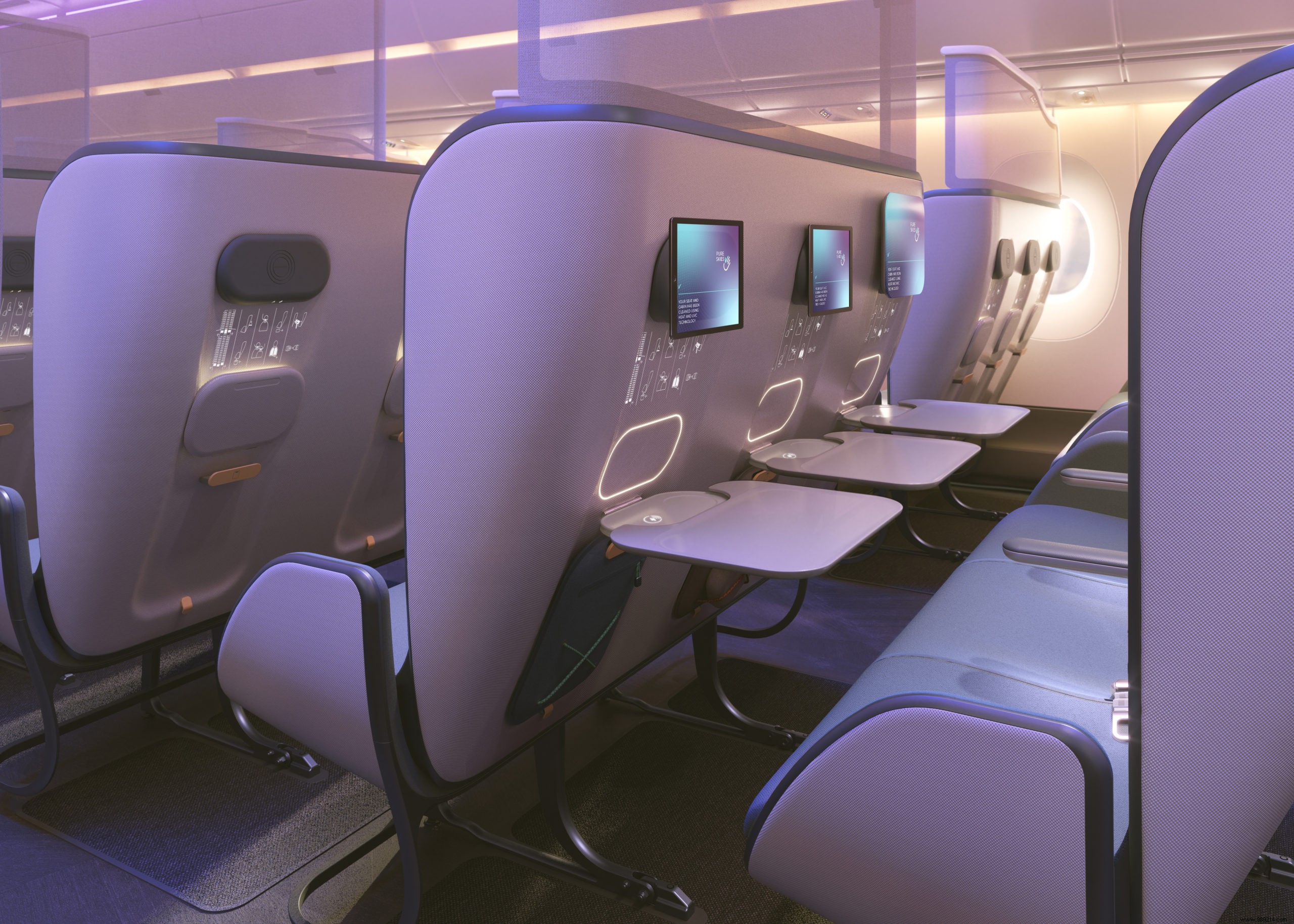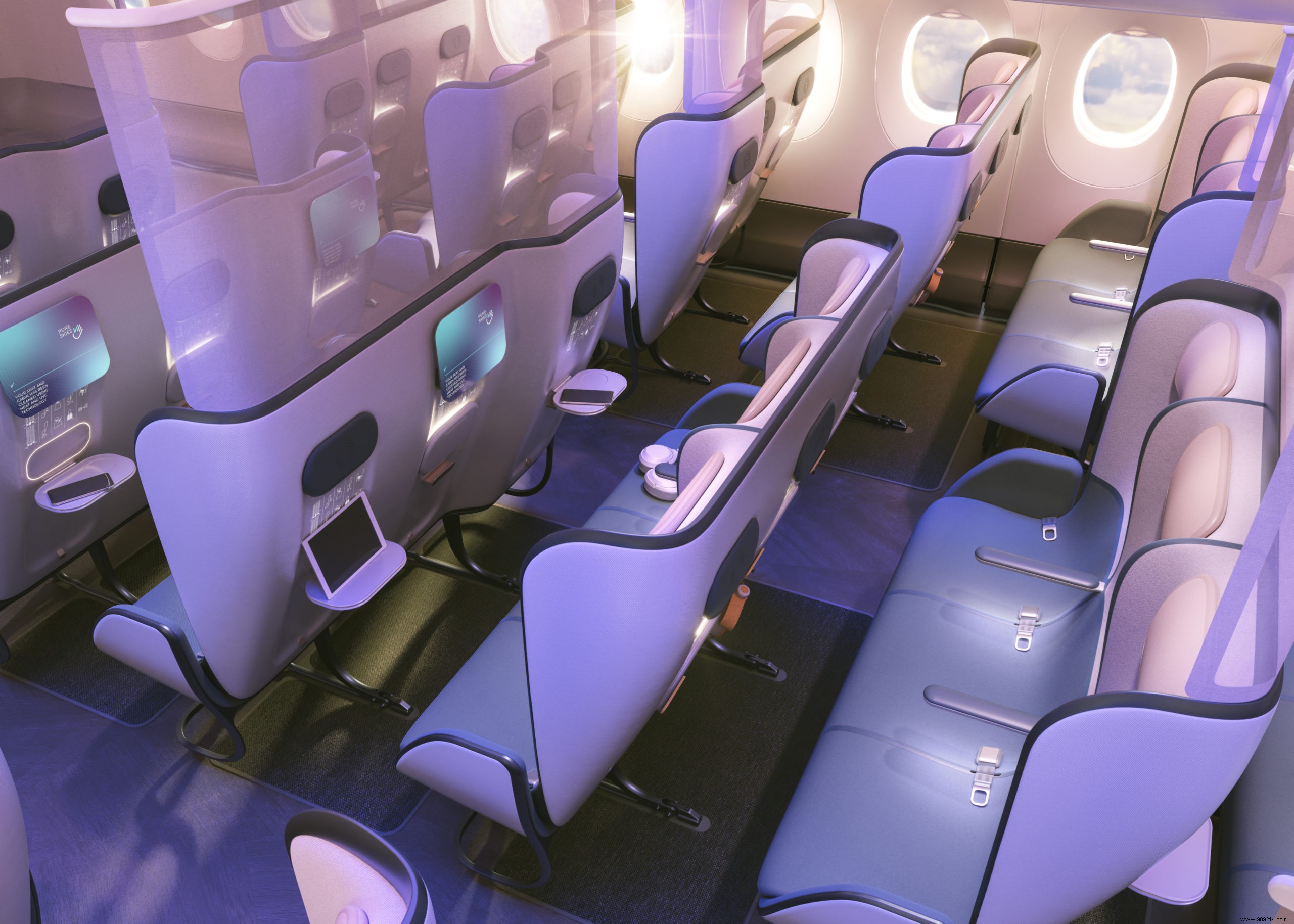A design studio recently imagined airplane cabins that take health risks into account. It is about improving personal space and hygiene, as well as reducing passenger stress. The studio also mentions a name change for the different categories of seats.
After a long significant drop in traffic, airlines are gradually restoring their lines. Like airports, these companies must now adapt to health risks related to Covid-19. This takes the form of a reinforcement of hygiene measures in order to reassure passengers and avoid contamination. Let's also mention the practice of screening tests at airports.
London, UK-based design studio PriestmanGoode has gone much further, as a post from the Airline Passenger Experience Association (APEX) of the July 28, 2020. The designers have indeed imagined what could be the cabins of tomorrow . Baptized "Pure Skies" ("pure skies" in French), this project has several specificities.
For Nigel Goode, founder of PriestmanGoode, this is an “opportunity to rethink some of the things that we have accepted as the norm but are not necessarily optimized for today's passengers" .


First of all, the designers thought about passenger stress. Soft colors such as blue and purple, known to have soothing properties, are ubiquitous. After boarding, warmer color tones will appear, such as red and orange. Furthermore, the finish and materials are considered very important in improving hygiene and personal space for passengers. In terms of hygiene, the project leaders thought of an antimicrobial fabric. This has the ability to react to photochromic and thermochromic inks which is used in the context of UV disinfection.
The PriestmanGoode studio also reflected on the image of airlines by mentioning a change in class names . In particular, it will be a question of "rooms" (business class) or even zones (economy class). In any case, the personal space of the "bedrooms" is completely enclosed, separated by high curtains. In the case of "zones", these are divided by plastic walls every two rows. There is also a staggered seating configuration maximizing the feeling of personal space. Apart from that, the name change marks an evolution of lesser importance insofar as there will always be classes. Everything suggests that it is simply a marketing strategy.